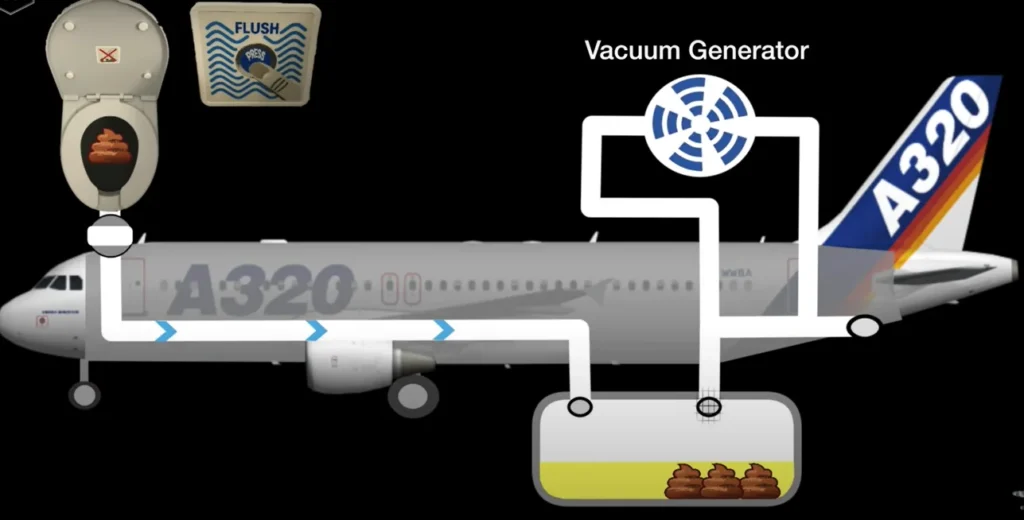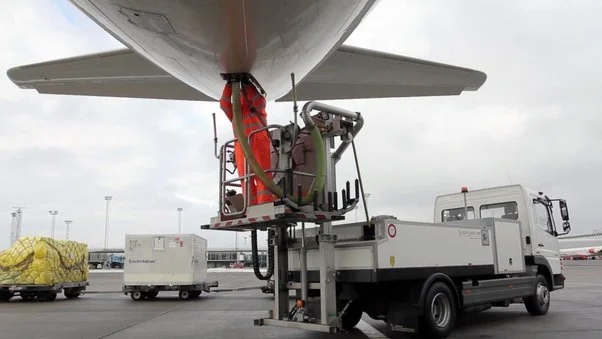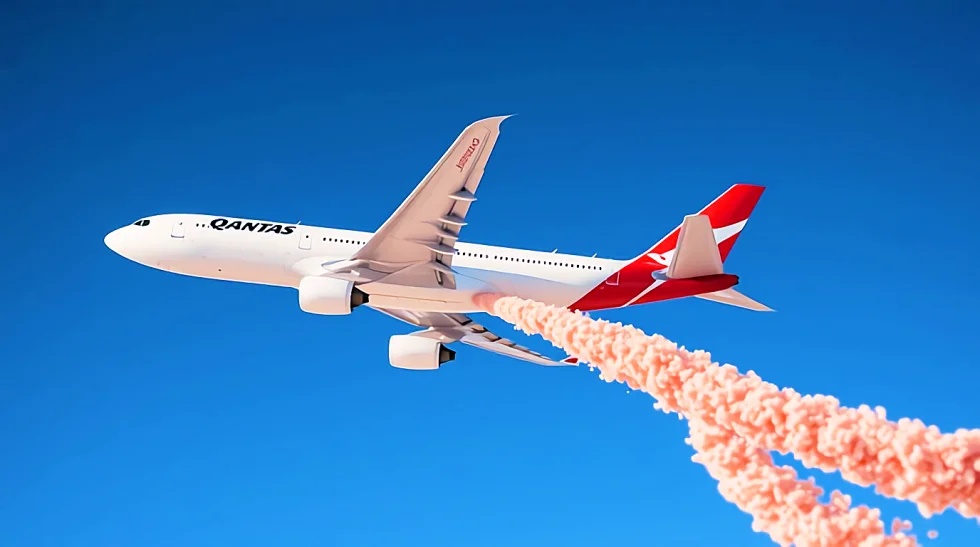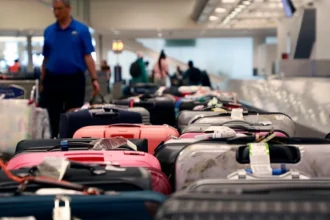In a world where air travel is safer than ever, a little-known but startling phenomenon continues to make headlines every few years—chunks of frozen “blue ice,” falling from commercial aircraft mid-flight.
While it sounds like urban legend, “blue ice” is a real, documented aviation occurrence that has cracked roofs, injured bystanders, and left investigators puzzled and homeowners shocked.
But what exactly is this sky-falling mystery?
What Is “Blue Ice”?
“Blue ice” refers to frozen sewage that escapes from an aircraft’s lavatory waste system. On commercial airliners, waste is flushed into sealed holding tanks using a blue disinfectant chemical.
Occasionally, due to leaks or faulty seals, small amounts of this liquid seep out and freeze instantly onto the plane’s fuselage at high cruising altitudes—where outside temperatures can drop below -60°C (-76°F).
As the plane begins its descent and enters warmer air, this frozen chunk may loosen, detach from the aircraft’s exterior, and plummet toward the earth. What makes it distinctive is the bluish tint caused by the disinfectant used in the toilets—hence the name “blue ice.”
How Does It Happen?
Modern aircraft use vacuum-based lavatory systems that are not supposed to release any waste in the air. However, mechanical failure, improper sealing, or unnoticed cracks in drain pipes or waste valves can cause very small leaks.
These leaks freeze quickly at altitude and build up over time. Most blue ice goes unnoticed and melts before it ever reaches the ground, but under certain atmospheric conditions, the ice chunks remain solid enough to fall and cause damage.
Airlines are legally forbidden from releasing any waste during flight, and aircraft maintenance crews are trained to prevent leaks.
Yet, despite regulations, a few cases continue to occur every year due to mechanical imperfections or wear and tear on the aircraft’s waste system.

Shocking Real-Life Incidents
Blue ice incidents have been recorded around the world, each with its own surreal and sometimes dangerous consequences.
2015 – India: A 60-year-old woman in Madhya Pradesh was hit by a chunk of blue ice that fell from a plane. She survived but was hospitalized with serious injuries. Local villagers initially believed it was a meteorite.
2013 – England: A massive ice block tore through the roof of a Hampshire family’s conservatory, causing over £10,000 in damage.
2018 – Canada: A resident of Kelowna, British Columbia, reported a loud crash followed by the discovery of a large piece of blue ice embedded in their yard.
2021 – California, USA: Homeowners in Chino Valley were awakened by an early morning boom, discovering a bathtub-sized hole in their roof and a giant chunk of icy debris in their attic.
While no deaths have been reported from blue ice falls, injuries and significant property damage have been documented.
In many cases, investigators use chemical analysis to confirm the ice is indeed a mixture of human waste and disinfectant—distinctive from natural hail or frozen rain.
Could Blue Ice Damage Planes?
Interestingly, blue ice doesn’t only threaten people or property on the ground—it can also pose a risk to the aircraft itself.
The U.S. National Transportation Safety Board (NTSB) has recorded multiple incidents where blue ice formed near the aircraft’s tail section and broke loose, damaging engine inlets or rear-mounted components.
In three known cases involving Boeing 727 aircraft, blue ice contributed to engine failure. Fortunately, in all cases, pilots were able to land safely.
Aircraft manufacturers now include anti-leak design features and improved waste valve systems to reduce the chance of these events.
How Rare Is It?
Despite the dramatic headlines, blue ice incidents are extremely rare. The U.K.’s Civil Aviation Authority estimates around 25 to 30 incidents per year over hundreds of thousands of flights.
Most of these go unreported, especially when the ice lands in rural areas or melts before reaching the ground.
Still, when it happens, it’s hard to ignore.
What the Law Says
International aviation law prohibits the intentional release of waste from aircraft. All human waste is collected in tanks and emptied only after the plane has landed, typically during ground servicing at the airport.
The Federal Aviation Administration (FAA) and European Union Aviation Safety Agency (EASA) enforce maintenance rules requiring:
Regular inspections of waste systems
Prompt repair or replacement of faulty seals or fittings
Incident reporting when leaks are discovered
Failure to maintain lavatory systems can lead to fines, grounding of aircraft, or stricter oversight.

Myth-Busting: Do Planes Dump Waste Mid-Air?
No. This is a common myth, but it’s false. Commercial planes do not and cannot legally dump waste while in flight.
Lavatory waste is stored in sealed tanks below the aircraft. It is only removed when the plane is on the ground.
Blue ice incidents occur not from intentional dumping, but due to accidental leaks that freeze on the exterior of the aircraft.
What Should You Do If You Suspect a Blue Ice Strike?
If an unexplained block of ice crashes onto your property, especially if it has a blue tint or an unusual smell, contact local authorities or your country’s civil aviation department.
They may send a team to investigate and confirm if the ice originated from an aircraft.
In many countries, damage caused by blue ice falls may be covered by the airline’s liability or local property insurance, but official documentation will be required.
Final Thoughts: A Rare Yet Real Phenomenon
Blue ice may sound like something from a science fiction movie, but it’s a scientifically documented.
And surprisingly persistent—issue in modern aviation. As planes become more technologically advanced, the risks have declined significantly, but occasional incidents still happen.
For most travelers, this phenomenon won’t affect your flight. But for people living under busy flight paths, a sudden blue-tinted ice crash might just be the weirdest thing to ever land in their backyard.













